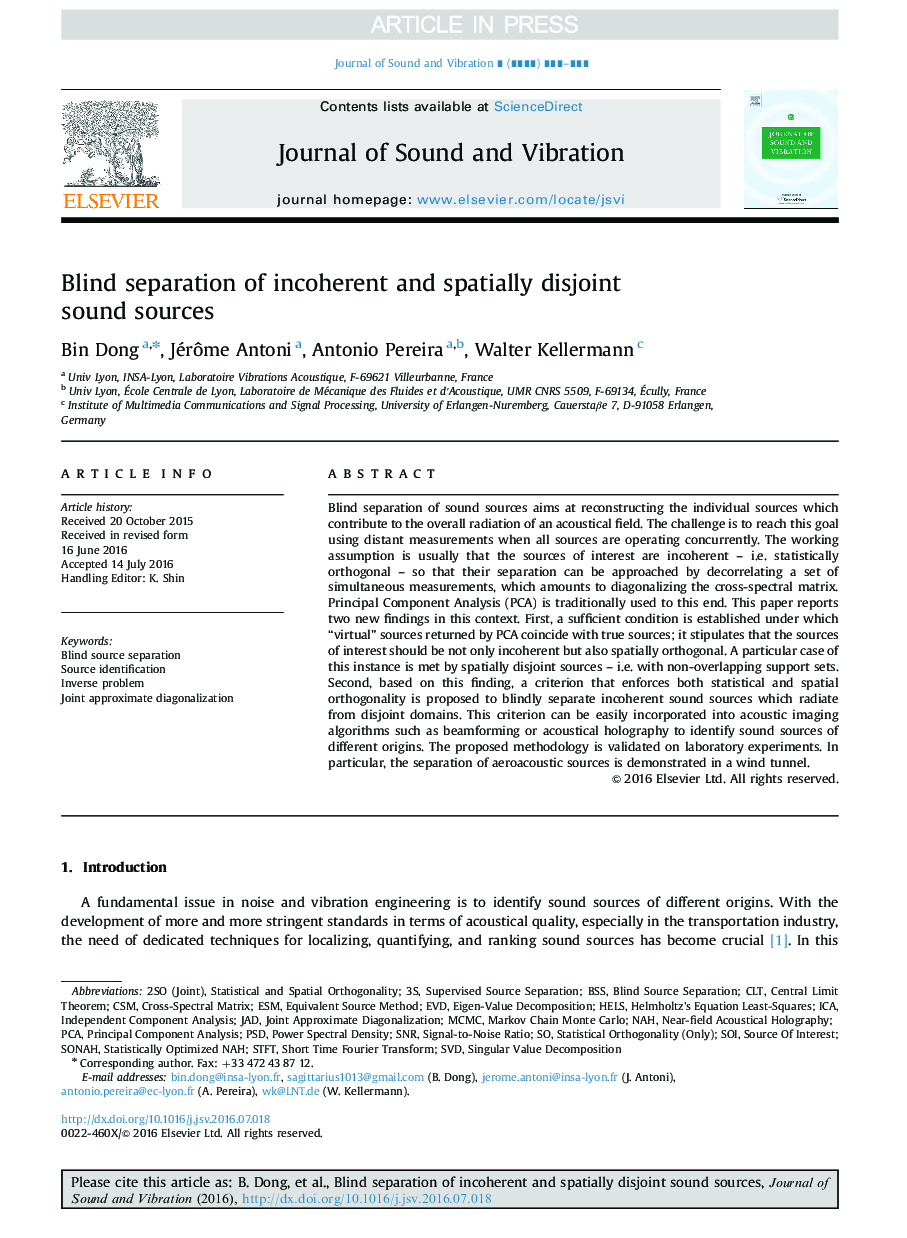| Article ID | Journal | Published Year | Pages | File Type |
|---|---|---|---|---|
| 4924455 | Journal of Sound and Vibration | 2016 | 32 Pages |
Abstract
Blind separation of sound sources aims at reconstructing the individual sources which contribute to the overall radiation of an acoustical field. The challenge is to reach this goal using distant measurements when all sources are operating concurrently. The working assumption is usually that the sources of interest are incoherent - i.e. statistically orthogonal - so that their separation can be approached by decorrelating a set of simultaneous measurements, which amounts to diagonalizing the cross-spectral matrix. Principal Component Analysis (PCA) is traditionally used to this end. This paper reports two new findings in this context. First, a sufficient condition is established under which “virtual” sources returned by PCA coincide with true sources; it stipulates that the sources of interest should be not only incoherent but also spatially orthogonal. A particular case of this instance is met by spatially disjoint sources - i.e. with non-overlapping support sets. Second, based on this finding, a criterion that enforces both statistical and spatial orthogonality is proposed to blindly separate incoherent sound sources which radiate from disjoint domains. This criterion can be easily incorporated into acoustic imaging algorithms such as beamforming or acoustical holography to identify sound sources of different origins. The proposed methodology is validated on laboratory experiments. In particular, the separation of aeroacoustic sources is demonstrated in a wind tunnel.
Keywords
SNRJADMCMCJoint approximate diagonalizationEquivalent source methodCSMSTFTBSSCLTEVDSVDICAESMSOIPSDPCAsingular value decompositionIndependent component analysisPrincipal component analysisPower spectral densityBlind source separationMarkov chain Monte CarloSource identificationCentral limit theoremInverse problemNAHSignal-to-noise ratioShort time Fourier transform
Related Topics
Physical Sciences and Engineering
Engineering
Civil and Structural Engineering
Authors
Bin Dong, Jérôme Antoni, Antonio Pereira, Walter Kellermann,
